What You Need To Know About the SECURE 2.0 Act
The latest version of the Setting Every Community Up For Retirement Enhancement (SECURE) Act brings with it important changes. The act was initially designed to help Americans save more for their retirements and these updates take further steps to achieve this.
It’s important to research how these changes will impact you, particularly in the grand scheme of your wealth management plan.
Your Entrust Wealth Partners advisor is always on hand to lead you through the finer details of the SECURE Act 2.0. However, as extra guidance, we’ve prepared this straightforward guide to all of the recent changes.
These are the main changes to the SECURE 2.0 Act you need to be aware of:
- Increased Required Minimum Distribution (RMD) age
- Changes to catch-up contribution limits
- Increases to qualified charitable distributions
- 529 to Roth IRA conversions will be possible from 2024
- Student loan payments will be eligible for employee matching
- Access to some emergency 401(k) funds will be penalty-free
- Retirement benefits can now be provided for domestic employees
Let’s go into these in more detail now:
Increased Required Minimum Distribution (RMD) Age
A big change to the new SECURE Act is that the required minimum distribution age (RMD) is increasing to 73. This means you must start withdrawing from your IRA, SEP IRA, SIMPLE IRA, or retirement plan accounts at this age. This is up from age 72 in previous years. The RMD will slowly rise to 75 by 2033.
This change can benefit you, as it gives you more time to save if you are still working. Your money can also continue to grow tax-deferred for longer.
However, if your tax bracket is going to be considerably higher by the time you reach 73, it might be wise to make Roth contributions well before you reach that age to offset some of that tax. Your EWP advisor can help you weigh out these factors.
Changes to Catch-up Contribution Limits
For people older than 50, it’s already possible to make catch-up IRA contributions of up to $1,000 annually. These catch-up contribution limits will now change according to inflation rates. This means that as the cost of living increases, so too will your catch-up contribution limits. This will come into effect in 2024.
With regards to 401(k), 403(b), or 457(b) plans, if you’re over 50, you’ll be able to contribute up to $7,500 for 2023. This is up from $6,500 in 2022. Then, from 2025 onwards, those in the 60-65 age group will be able to contribute up to $10,000 in catch-up contributions.
Increases To Qualified Charitable Distributions
For those looking to maximize their charitable giving, while also easing their tax burden, the SECURE 2.0 act will bring two important changes.
Firstly, the existing $100k qualified charitable distribution limit available to 70.5-year-olds and over will be indexed for inflation from 2024 onwards to keep pace with the cost of living.
The second main change is that a one-time $50,000 charity distribution will now be possible. This payment will come from your IRA and would need to be made to a charitable remainder unitrust (CRUT) or a charitable remainder annuity trust (CRAT).
529 to Roth IRA Conversions Will Be Possible From 2024
Traditionally any 529 plan college funds not used would incur a 10% fee on withdrawal. This brought an element of risk to putting funds in a 529 plan, despite the tax benefits they bring. With the new changes, 529 college funds can now be transferred over to a Roth IRA fund, should you wish to use them for non-educational purposes.
You can now convert up to $35,000 of the funds you have saved in a 529 plan without facing any penalties. This gives you more flexibility and eliminates some risk.
Student Loan Payments Will Be Eligible for Employee Matching
According to the new act, many student loan repayments will be eligible for employee matching from 2024.
How this would work is that your employer will match every dollar you pay off your loan, by contributing to a simple IRA, 401(k), 403(b), or 457(b) plan on your behalf. Like all of these measures, this change has been brought in to help Americans save more for their retirement.
Access to Some Emergency 401(K) Funds Will Be Penalty-free
Prior to this act, you faced a 10% penalty if you needed to withdraw funds from your 401(k) for emergencies. However, with the recent changes you will be able to withdraw up to $1,000 a year. You’ll need to pay this back within three years and you won’t be able to withdraw more during that 3 year period until you have paid. This measure will come into place after December 31, 2023.
Retirement Benefits Can Now Be Provided for Domestic Employees
If you have any domestic employees like a nanny or a housekeeper, you can now provide them with retirement benefits in the form of a simplified employee pension plan (SEP), something that wasn’t possible before SECURE 2.0.
Any contributions you make to your employee's SEP will be tax deductible, so not only are you helping your employees save for their retirement, but you can also use those contributions to offset your taxes.
Next Steps
The SECURE 2.0 act brings with it changes that impact both those heading into retirement and those saving for retirement.
At least one of these updates is likely to impact you and should be factored into your overall wealth management plan. This is where your Entrust Wealth Partners advisor is on hand to help. They can answer any queries that you have and make sure you’re making the most of these changes.
Contact your Entrust Wealth Partners advisor or contact our Entrust Wealth Partners office at (860) 838-3730 to see how these updates could impact you in the coming years.
This material was created for educational and informational purposes only and is not intended as ERISA, tax, legal or investment advice.
If you are seeking investment advice specific to your needs, such advice services must be obtained on your own separate from this educational material.
This material was prepared by Courtney Henry Consulting.

